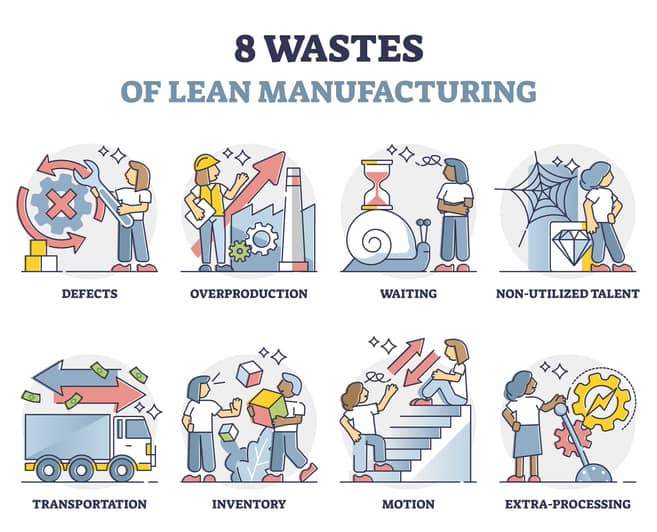By: Michael Parent
What does the future of Lean look like? The Machine that Changed the World started in one manufacturing company and has since moved into the healthcare space and beyond. What new frontiers have yet to unharness the transformative power of Lean, and do we have the acumen to bring Lean into these non-traditional spaces?
As a Lean Transformation Specialist in an HR organization, I am an apostle to this new frontier. The challenges I’ve faced and the best practices my team and I have developed are a constructive study for any practitioner tasked with bringing Lean into a new business function or unfamiliar organization.
Best Practice #1 – Guide Management, Create a Playbook
Production facilities track machine downtime, scrap rates, efficiency and production. There is a level of critical thinking already inherent to these organizations that may not exist in other functions or industries. For example, in HR organizations, you’ll likely find people who aren’t just disinterested in, but hostile to critical analysis. This isn’t the run-of-the-mill “We’re different” pushback. This is something more acute, like a perturbation to learning a foreign language.
To overcome this hurdle, we created an A3 playbook which guided the organization’s management team through a systematic critical thinking process. In our particular case, we found the team had difficulty linking strategic objectives to Lean projects. This playbook took some of the decision process, and uncertainty, out of their hands.
Once a strategic goal was selected, the playbook guided the leaders through their problem statement, narrowing their choices of what their project goals and measures should be. The A3 is scientific visual management at its finest, standardizing project and outcome archetypes. The goal is to understand how strategy dictates tactics by getting good at just a few “plays.”
Best Practice #2 – Demonstrate Value, Create a Flagship Process
To make a difference, you must change minds. The quickest way to accomplish this is by demonstrating value. By creating a flagship process, Lean transformation specialists can align their focus and resources to building the Lean foundations that lead to customer value.
The team created a flagship process in the talent acquisition department. The value from this flagship transformation should come not from applying Lean tools; instead, it should come from the transformation of an individual’s changed mindset. When a talent acquisition team stops speaking from intuition and instead insists on Gembaing the process, tools like standard work and visual management are means to the end you’ve already accomplished.
Best Practice #3 – Get Buy-In, Cut Back the Tools
For an organization to adopt Lean, it must balance engagement with results. Too many tools too quickly will result in poor understanding and pass away like a bad fad. Too few and it feels like wasted effort.
The team focused on three Lean concepts:
By stressing these three principles, the team gained organizational support to move forward. Naturally, we weren’t achieving everything a full Lean rollout is capable of achieving, but we would rather get buy-in and engagement on a critical few than passive reluctance to the whole suite of concepts and tools. Lean is a journey and it’s acceptable if some organizations take longer than others.
Best Practice #4 – Cadence of Accountability with A3s
Organizations unfamiliar with Lean generally do not have good disciplines of execution. We found that though individuals may understand Lean concepts, they struggled to apply them daily.
To overcome this challenge, my team and I set up weekly management meetings with the A3 “playbook” deliverable. Each week the talent acquisition management team would meet with my team to review a portion of the playbook that had been completed the previous week. The A3 was crucial in level-setting the expectations of how to apply Lean. More, it informed everyone how the management team was progressing into a Lean organization.
Lean Transformation Overview
Implementing Lean in a new organization can be a formidable task. When overseeing a Lean transformation in a new organization, your primary focus should not be on Lean, but on managing change. It takes clarity of purpose and communication to manage this change.
By creating a playbook, the organization can understand how the tools connect to strategy. By creating a flagship, the organization can live and breathe Lean culture and see its value. By cutting back the tools, your transformation efforts can be hedged against over complicating Lean and turning people off. By using a tool like A3s, the transformation establishes a cadence of accountability that empowers people to buy-in and achieve excellence for themselves and their organization.
Bio: Michael Parent is a DFSS Black Belt with more than five years of experience leading Lean transformation projects. He has worked in the manufacturing and insurance industries and has lead transformations in disciplines such as recruiting, employee relations, product design, manufacturing design, AGVs and robotics. Topics he is passionate about include leading Lean transformations and managing/coaching innovation. He has a BSE in Industrial and Operations Engineering from the University of Michigan in Ann Arbor and an MBA from the College of William and Mary.



